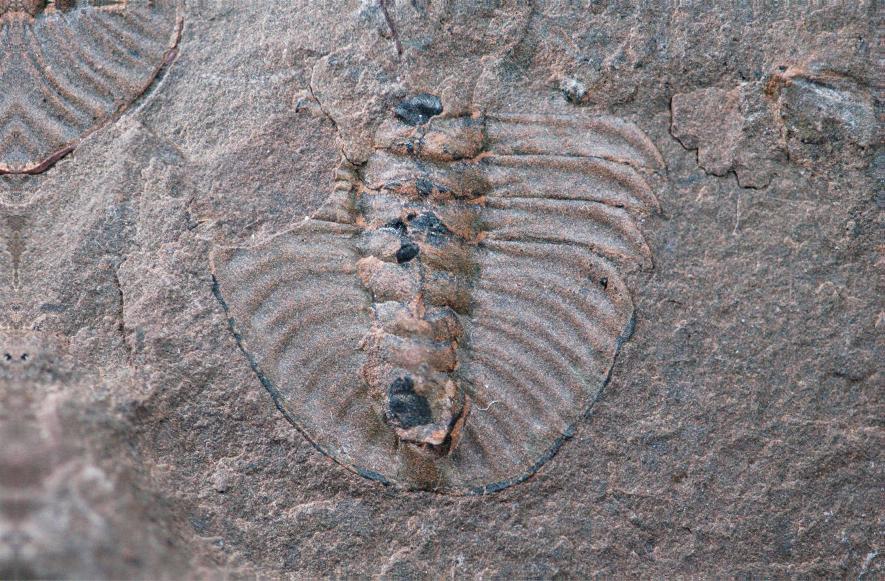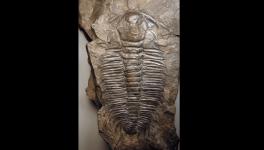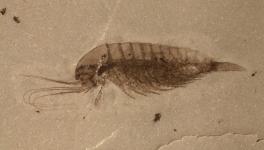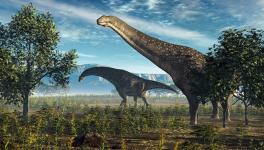What the Cambrian Fossils in the Rocky Mountains of Canada Reveal

The Burgess Shale, part of the Rocky Mountains in Canada, is one of the largest homes to fossils as old as 540 million years—the Cambrian period. Ever since its discovery by Charles Walcott in 1909, Burgess Shale has been a mesmerising spot for archaeologists, palaeontologists and research enthusiasts. Since 1909, with every excavation, Burgess Shale has been continuing with giving out information about unfamiliar species of the Cambrian period.
In their recent excavation this year, a team led by Paleontologist Cedric Aria of the Nanjing Institute of Geology and Paleontology, China and Jean Bernard Caron, curator of invertebrate paleontology, Royal Ontario Museum, Canada has also reported to have found fossils of archaic period. They have found the fossils of new species of butterflies, fish hyoliths (the ice cream cone shaped fossil) etc.
Why Fossils of the Cambrian Period are Important
The Cambrian period marked the most profound change in life on earth. Almost all the metazoan species made the first appearance on this earth during the Cambrian period only. Metazoans are the species that undergo development starting from an embryo having three layers of tissue, namely ectoderm, mesoderm and endoderm. Before this period of time, the majority of all living organisms, in whole, were simple, unicellular, and smaller. Actually, it is the Cambrian period when complex multicellular organisms started becoming common.
The Cambrian period, the first geological period of the Paleozoic era, lasted for some 55.6 million years. It started 541 million years ago at the end of the preceding Edicaran period and flourished the life forms till its end towards the beginning of the Ordovician period about 485 million years ago.
How Cambrian species are related to the members of the today’s animal kingdom is an important aspect of how animals have evolved in time. Scientists and researchers are engaged for many decades in deciphering the factors that triggered the Cambrian evolutionary explosion. There have been reports that many species of that period were advanced in terms of anatomy and physiology, nevertheless many of them seem to be unrelated to the advanced animals of later period. Conversely, there had also been species in the Cambrian period that are found to be related to the animals of later times.
Also Read: Prehistoric Cave Woman Was An Offspring Of Two Different Species Of Archaic Humans
The Burgess Shale
The Burgess Shale is referred to the rocky part found in the Canadian rocky mountain the Burgess Pass. Shale is the sedimentary rock consisting of silt and mud. Located in the Yoho National Park in British Columbia, Canada, the Burgess Shale is home to an enormous variety of metazoan fossils existing in the Cambrian Period. First discovered by Walcott in 1909, the creepy crawlies of Cambrian time buried in the Burgess Shale have stunned people with unearthing of ever new archaic species with each excavation done here.
But in recent years, many excavations have shown that the Rocky Mountains range of fossil extends much beyond what Walcott found. Among the excavators, Caron’s team is one of the leading one. Caron has shown that the area in the Burgess Shale extends many kilometres beyond Walcott’s site. His latest visit to the Cambrian tapestry was the one made this summer. Each new step had to reveal the secret of striking views of unfamiliar animals—all archaic. The little fish relative Metaspriggina, the Tokummia etc. are the few to name.
Also Read: Ancient DNA Studies Show the Paleo-Indians’ Deep Roots in Both North and South America
How Cambrian Species are Related to Modern Animals
Since the time of Walcott, it has been a much-debated issue how to establish the link between the Cambrians and today’s animals. Walcott classified his unknown fossils within known groups taking into account the fact that some of the Burgess Shale fossils, for example brachiopods, persisted to live after the Cambrian with some making their presence even today. This led him to conclude that almost all creatures that resembled today’s arthropods were crustaceans.
Later on, paleontologists developed other ways of classifying and establishing the link between the ancient animals with that of the modern ones. For example, Stephen Jay Gould of Harvard University in his book “Wonderful Life: The Burgess Shale and the Nature of History” found many Cambrian animals, such as the aptly named Hallucigenia which was a worm with legs and hard spines, seemed unrelated to later animals. Gould says that species of these kinds are the forgotten experiments of evolution.
Contemporary paleontologists found another way to settle the issue. For example, consider the arthropods. In a family tree, the recent branches that signify the living arthropods like that of spiders, insects, crustaceans etc. constitute the “crown” group. But some of the fossils in the Burgess Shale probably appeared much before the crown group animals and they belong to “stem” which branched off from the family tree before the crown arthropods appeared. The stems don’t have any more descendants. Newer fossils found in the recent excavations of Caron also help support this way of classifying. Caron, in 2015, argued that his specimens of Hallucigenia have the features suggestive of the fact that the animal belongs to one such stem group of the velvet worms. The velvet worms still crawl around the tropical forests.
With the finding of ever new species with new excavations in the Cambrian tapestry, finding the link with modern animals and also finding the way the animal kingdom bloomed and finding the evolutionary aspects involved, are key challenges for archaeologists and paleontologists.
Get the latest reports & analysis with people's perspective on Protests, movements & deep analytical videos, discussions of the current affairs in your Telegram app. Subscribe to NewsClick's Telegram channel & get Real-Time updates on stories, as they get published on our website.


















